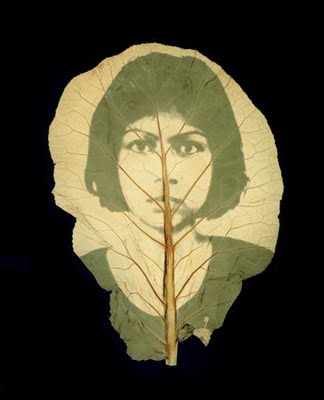last class we attempted a chaotic catch up with everyone on Cyanotype and Van Dyke as well as combining the two processes, with various levels of success. It is tricky to get something interesting, but when it works, it's very cool.
What we did was make a very over exposed cyanotype. Once this had dried we coated the print with a 50% dilution of reccomended van dyke. and then make an exposure over that. This is not an easy thing to master, but over time, one can get amazing results!
Simon #1 sent along the information for the Fox Talbot work which can be found:
"... in the library's special collections section:
http://special.st-andrews.ac.
If you want to see them you probably can without a problem, if they
recognise your Edinburgh library card -- which they probably do, but
it'd be best to check before coming up."
This weekend is International Pinhole Day. I hope you can find a time to celebrate it.
http://www.pinholeday.org/events/?event=2194
We won't have class this week in observance of various holidays. Next week we will be doing Albumen.
This is a very particular process. Please look at the link in the previous posting, to make yourself decent negatves for the process, or you might be disappointed. I want everyone to have 5 good negatives for the process, ready to work with next class, as well as 10 pieces of paper torn down to size and labeled with your name and process on it. THIS MUST BE DONE BEFORE CLASS.
If you would like to do Anthrotypes, please bring in some of the following:
beets, berries, flower petals, leaves, herbs etc
please bring enough to share. we will only be making the emulsions in class bring some bottles to take your emulsions home to coat.
http://www.nickyjthompson.co.uk/gallery_302244.html
What we did was make a very over exposed cyanotype. Once this had dried we coated the print with a 50% dilution of reccomended van dyke. and then make an exposure over that. This is not an easy thing to master, but over time, one can get amazing results!
Simon #1 sent along the information for the Fox Talbot work which can be found:
"... in the library's special collections section:
http://special.st-andrews.ac.
If you want to see them you probably can without a problem, if they
recognise your Edinburgh library card -- which they probably do, but
it'd be best to check before coming up."
This weekend is International Pinhole Day. I hope you can find a time to celebrate it.
http://www.pinholeday.org/events/?event=2194
We won't have class this week in observance of various holidays. Next week we will be doing Albumen.
This is a very particular process. Please look at the link in the previous posting, to make yourself decent negatves for the process, or you might be disappointed. I want everyone to have 5 good negatives for the process, ready to work with next class, as well as 10 pieces of paper torn down to size and labeled with your name and process on it. THIS MUST BE DONE BEFORE CLASS.
If you would like to do Anthrotypes, please bring in some of the following:
beets, berries, flower petals, leaves, herbs etc
please bring enough to share. we will only be making the emulsions in class bring some bottles to take your emulsions home to coat.
http://www.nickyjthompson.co.uk/gallery_302244.html
 |
| Bin Dahn, Chlorophyll process |









